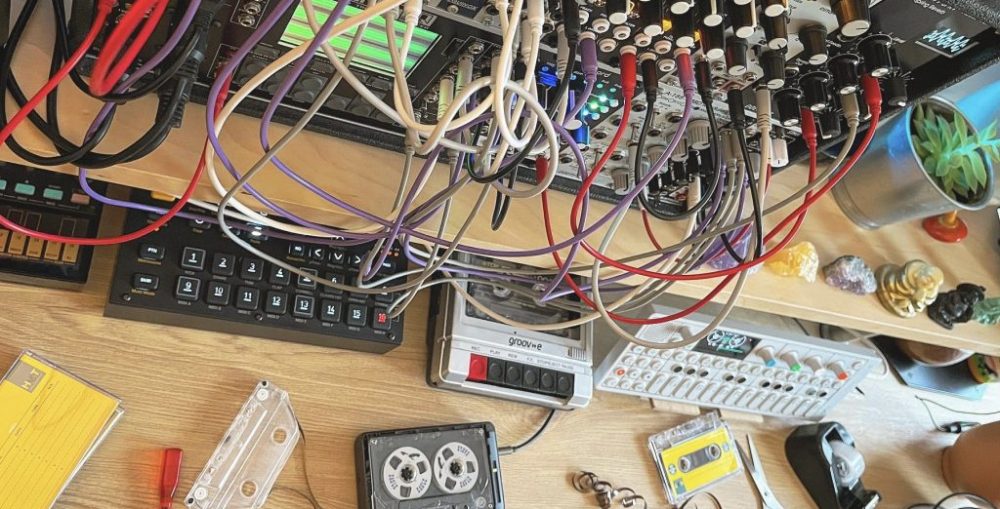LESSON 5: MAKING YOUR FIRST AUDIO RECORDING

1. How much disk space is consumed per minute by a mono track at a sample rate of 44.1 kHz and a bit depth of 16-bit? What happens to disk space consumption if the sample rate is doubled to 88.2 kHz with the same bit depth? (See “audio storage requirements” beginning on page 96.)
At a sample rate of 44.1 KHz, each track consumes approximately 5 MB of storage per minute for 16-bit audio (mono). With increasing bit depth in sample rate, drive consumption increases correspondingly; recording at a sample rate of 88.2 Khz, therefore consumes twice as much drive space as recording 44.1 kHz. Similarly recording in stereo consumes twice the space of recording in mono.
2. How can you monitor the storage space available on your system to determine the amount of record time remaining for each mounted drive? (See “disk usage window” beginning on page 97.)
WINDOW > DISK USAGE
3. How can you create a click track for a session? What kind of track is used for a click track? (See “creating a click track (Optional) ” beginning on page 97.
TRACK > CREATE CLICK TRACK (OPTIONS > CLICK to enable the CLICK track) (Alpha numeric 7 – toggle click) SETUP > CLICK / COUNT OFF
4. What window(s) can you use to record– enable an audio track? (See “record – enabling tracks” beginning on page 100.)
EDIT or MIX windows
5. What selector can you use to route a signal from an input on your audio interfaceto a track for recording? (See “input path” beginning on page 100.)
AUDIO INPUT PATH SELECTOR in the tracks I/O section.
6. How can you adjust the input level going to a record – enabled track? Can you use the volume fader to achieve a strong signal going to disk? (See “input level” beginning on page 102.)
By adjusting the level of your analog source, while monitoring the indicator lights on your on-screen track meter. No – Record levels cannot be adjusted within Pro Tools. (For best results, aim for an average peak input level around -6DBFS, keeping the track meter in the yellow range.)
7. How can you place a session in Record Ready mode after record–enabling a track? What modifiers/shortcuts are available to initiate recording without first entering Record Ready mode? (See “recording and managing audio” beginning on page 102.)
Click the RECORD button in the Transport Window / controls in EDIT window). cmd+SPACEBAR or f12
8. Where are recorded audio files stored for Pro Tools sessions? (See “organising audio files and clips” beginning on page 103.)
Session hierarchy / AUDIO FILES
9. What term is used to describe an unedited audio file in Pro Tools? What term is used to describe the smaller, edited pieces of the original sound file? (See “recognising audio files and clips” beginning on page 104.)
Audio files / Whole-file clips. Subset / clips .
10. What types of clips are represented by boldface text in the clip list? What type is represented by normal (plain) text? (See “recognising audio files and clips” beginning on page 104.)
Whole-file clips are in boldface. All other clips are in normal type.
11. How do track names affects the default names of the audio files you record in Pro Tools? (See “default naming conventions” beginning on page 105.)
When you record audio on a track, Pro Tools names the resulting file (a whole-file clip) using the name of the track as the base name. Pro Tools also appends an underscore and take ID to the clip name.
12. Describe two ways to rename an audio file after recording into Pro Tools. (See “changing file and clip names” beginning on page 105.)
Double click the file or clip in the Edit window (with the GRABBER tool) or in the Clip list. Right-clickon the file or clip in the Edit window or Clip List and select RENAME from the pop-up menu .
13. How would you go about removing unwanted audio from the Clip List without deleting the files from disk? (See “removing audio clips” beginning on page 106.)
Select the clips in the Clip List that you want to remove (to select multiple clips cmd+click, to select a continuous range click on the first clip and shift+click to the last clip) then click the down arrow at the top of the Clip List and choose CLEAR from the Clip List pop-up menu. Click REMOVE in the resulting Clear Clips dialog box.
14. How would you go about deleting unused whole –file clips to erase from your storage drive? Can this action be undone? (See “moving or deleting audio files” beginning on page 107)
As above, but in the Clear Clips dialog box choose DELETE.

